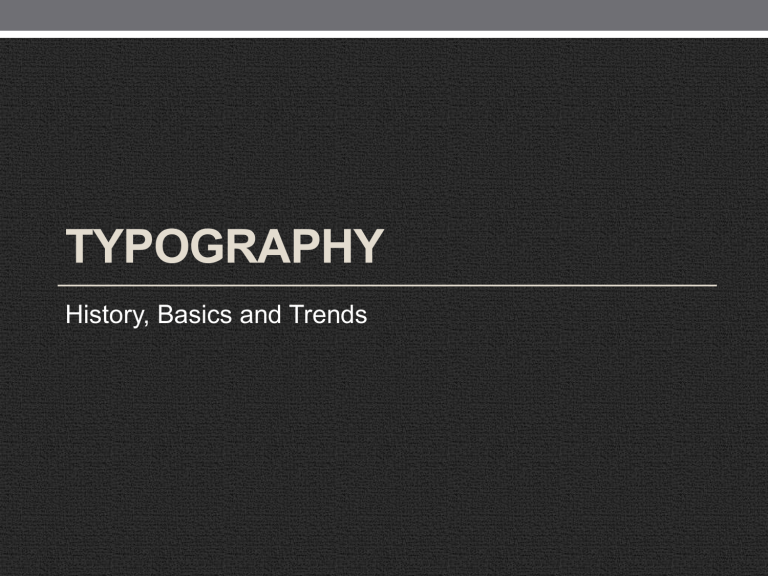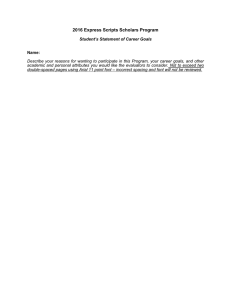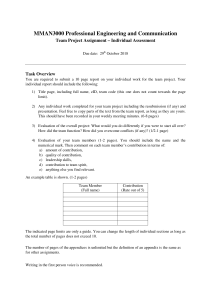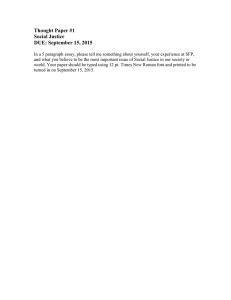
TYPOGRAPHY History, Basics and Trends DEFINITION • • • • The art, craft, or process of composing type It adds emotion to communication Type is the written language Also called text DIFFERENT FROM CALLIGRAPHY • • • Highly decorative handwriting The art of writing beautifully Also called chirography HISTORY Since man did not begin to write with type, but rather the chisel, brush, and pen, it is the study of handwriting, that provides us with the basis for creating type designs. PICTURE WRITING • • • Pictographs Ideographs Hieroglyphics PICTOGRAPHS • • First type of messages in history records a series of pictures that told a story IDEOGRAPHS A sign or symbol that directly represents a concept, idea, or thing rather than a word or set of words for it HIEROGLYPHICS Picture or symbol representing an object, a concept, or a sound. WRITING WITH LETTERS • • • Greek Phoenicians Roman GREEK • • Phaistos Disc dates between 1850 and 1600 BC PHOENICIANS • • • 1200 BC Phoenicians gained independence from the Egyptians develop their own alphabet – the first to be composed exclusively of letters ROMAN • • Further developed the alphabet by using 23 letters from the Etruscans who based their language on the Greek. Contributed short finishing strokes at the end of letters known as serifs CAROLINE MINUSCULE • • • • 732 Ordered by Charlemagne (Charles the Great) System of writing Lowercase letters JOHANNES GUTTENBERG • • • 1440 Invented movable type and printing press Invented first typeface – Gothic Black letter NICHOLAS JENSON • • • 1450 created the next font which was the first roman typeface. known for being more light weight and used in many formal occasions ALDUS MANUTIUS AND FRANCESCO GRIFFO • • 1500 Invented the concept of pocket books • Developed Italic typeface • Influenced by the cursive handwriting popular in Italy PICA • • • • • 1750 The first measurement system for typeface created by Pierre Fournier le Jeune. The system measures font size in "picas" Still used today JOHN BASKERVILLE • • • 1757, creates his own font, Baskerville The first to take into consideration leading, margins and strokes. Created a variety of thick and thin strokes and adjustable width and leading. LORD STANHOPE • • Created the first steam powered printing press 480 pages per hour VICTOR LARDEN • • • 1932 Created Times New Roman For British newspaper, The Times. EDUARD HOFFMANN • • 1957 Invented Helvetica JOEL KADEN AND TONY STAN • • 1974 Invented the typewriter TYPOGRAPHY BASICS • • • • • Typeface Font Type families Character parts Format TYPEFACE • A group of characters, such as letters, numbers, and punctuation, that share a common design or style Times New Roman Arial Helvetica Courier Verdana FONT • • The means by which typefaces are displayed or presented. particular size, weight and style of a typeface. TYPE FAMILIES • The different options available within a font Ariel Ariel Bold Ariel Italic Ariel Narrow Ariel Black CHARACTER PARTS FONT FEATURES SERIF FONTS • • • Font with small lines called serif at the end of the various strokes of a character Print media Easier to read on paper Times New Roman Century Palatino Garamond Bodoni SANS SERIF FONTS • • • Font without serif Digital Media Easier to read on screen Tahoma Ariel Berlin Sans Franklin Gothic Calibri KERNING • Inter-character spacing Kernin g Kerning Unkerned type Kerned type LEADING • • Line spacing Space between lines can be expanded or tightened Leading refers to the distance between lines of text. This distance, measured in points, is measured from one baseline to the next. Leading refers to the distance Leading refers to the distance between lines of text. This distance, measured in points, is between lines of text. This measured from one baseline to distance, measured in points, is measured from baseline to the next. one the next. TRACKING • • Word spacing Used to make type fit a required space without altering the type size or line spacing Used to make type fit a required space without altering the type size or line spacing Used to make type fit a required space without altering the type size o r line spacing Used to make type fit a required space without altering the type size or line spacing TYPOGRAPHY TRENDS • • • Handwritten fonts Flat Design Typography Mix & Match Typography • Large Type The End




